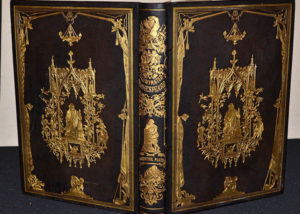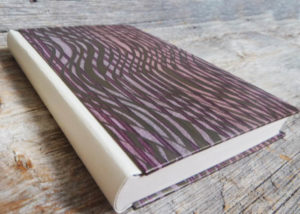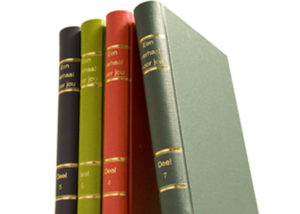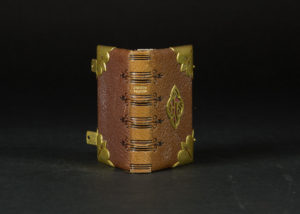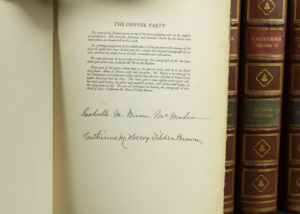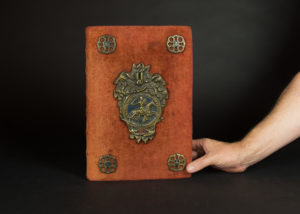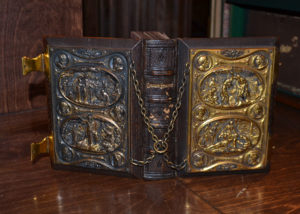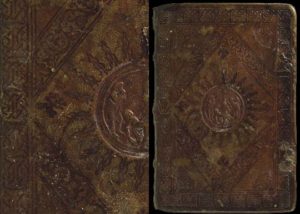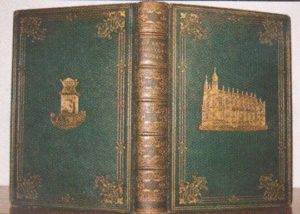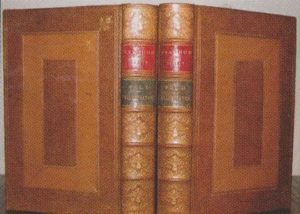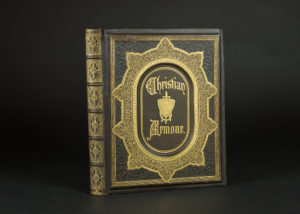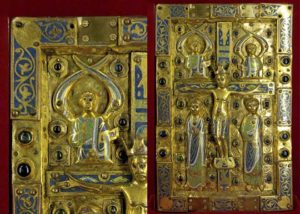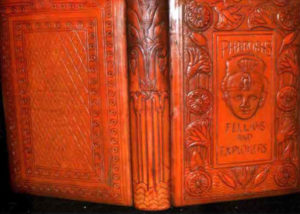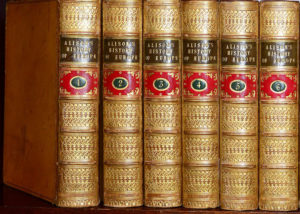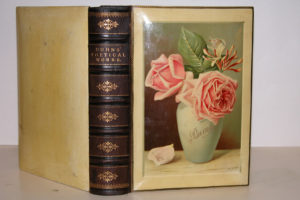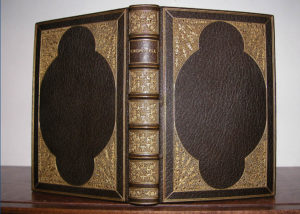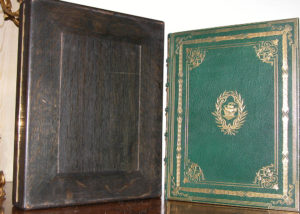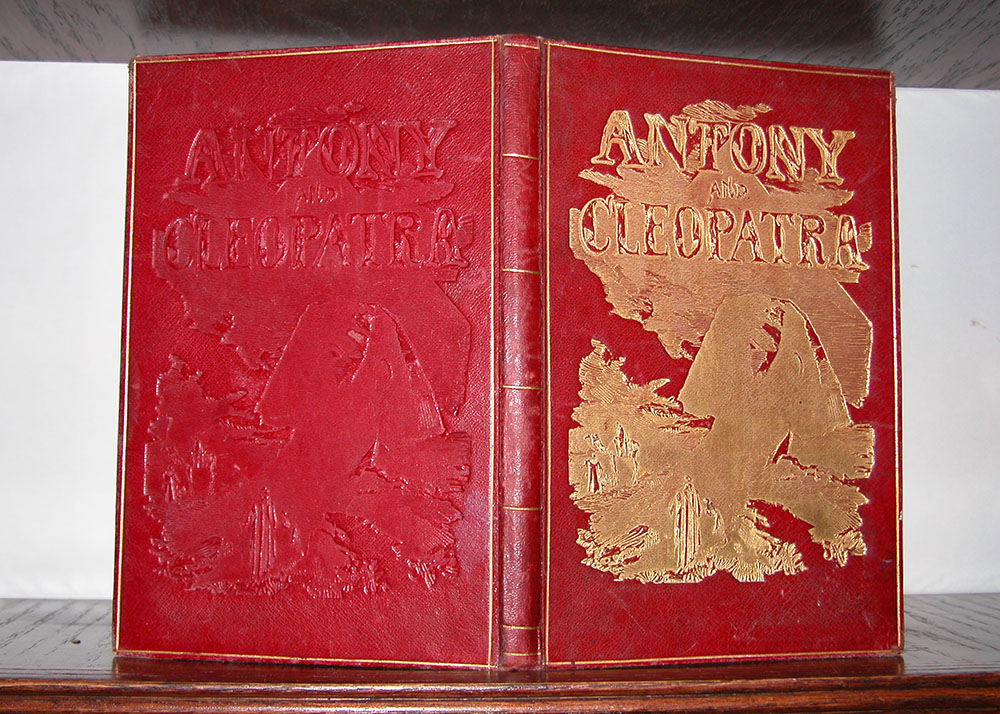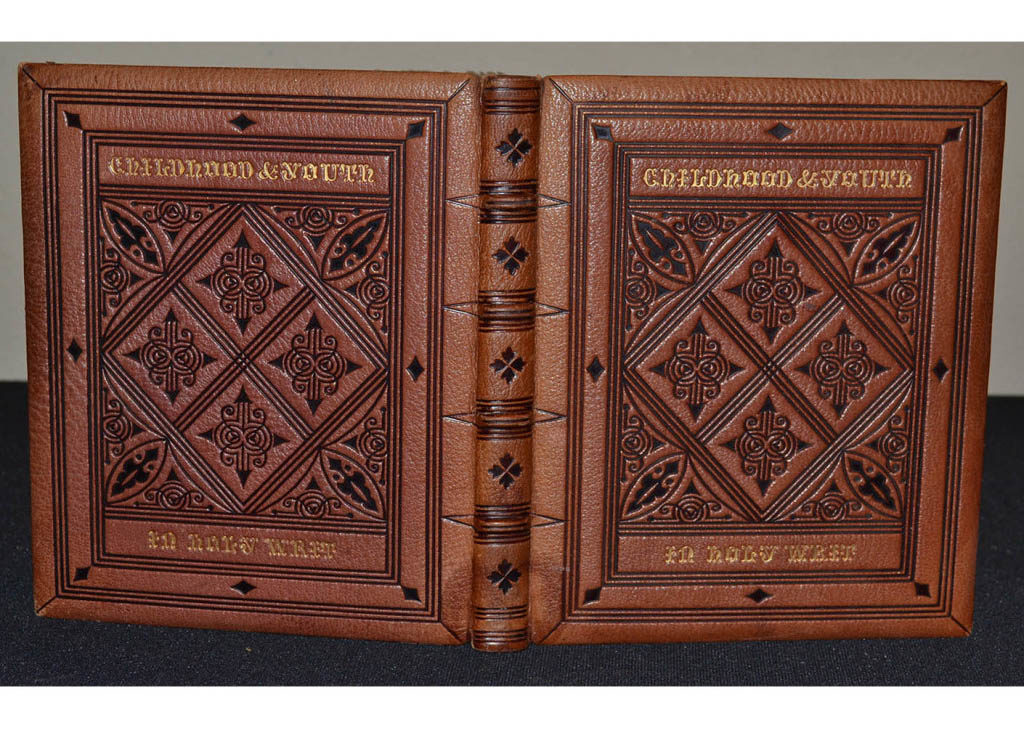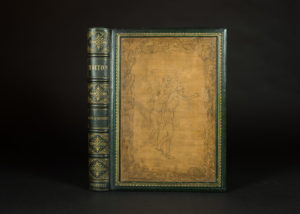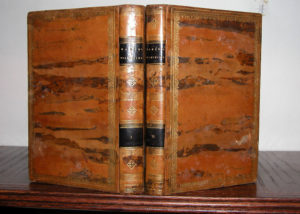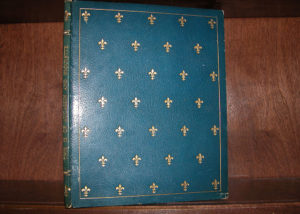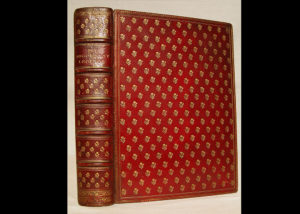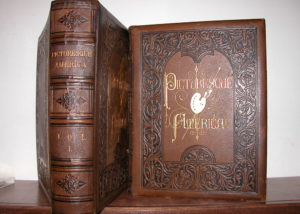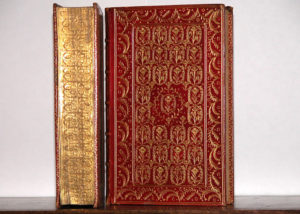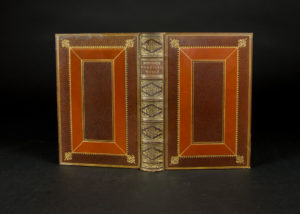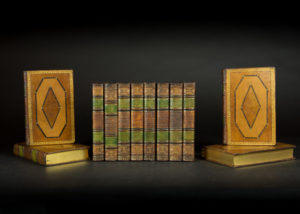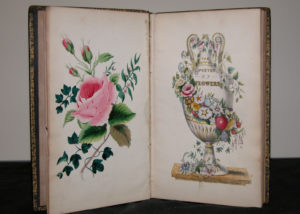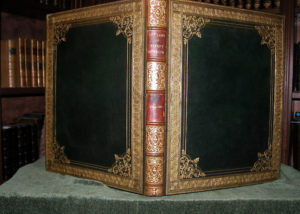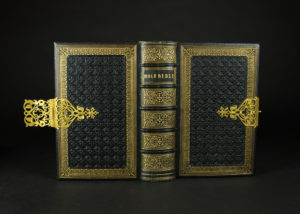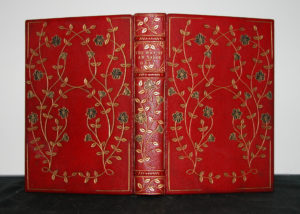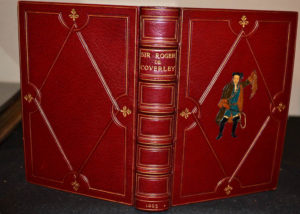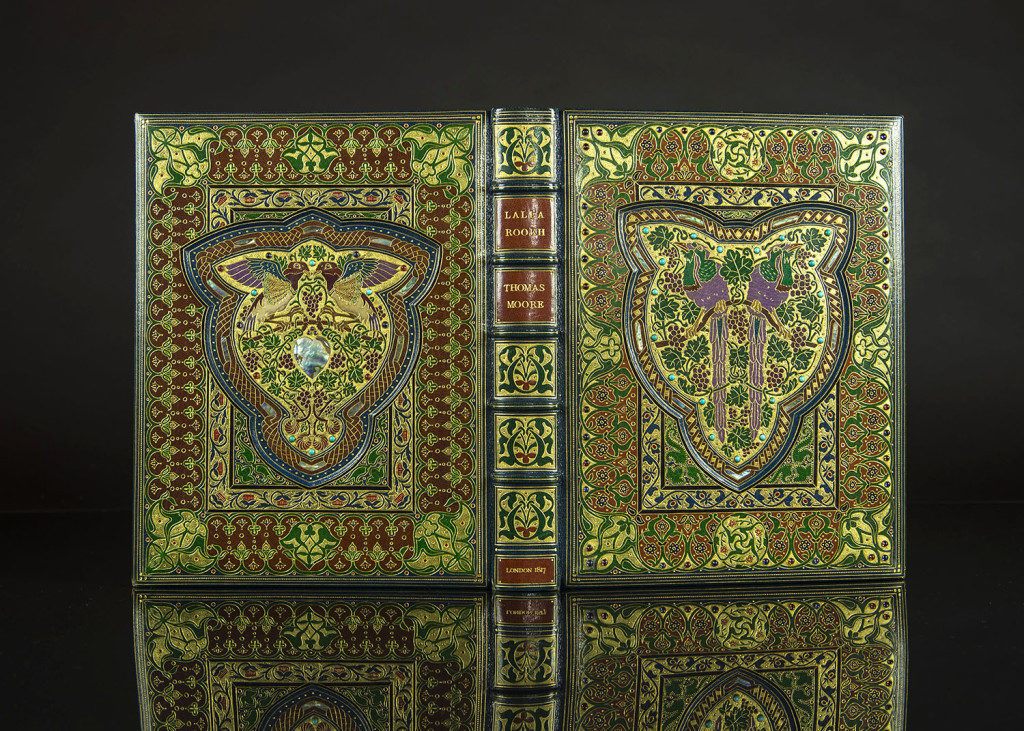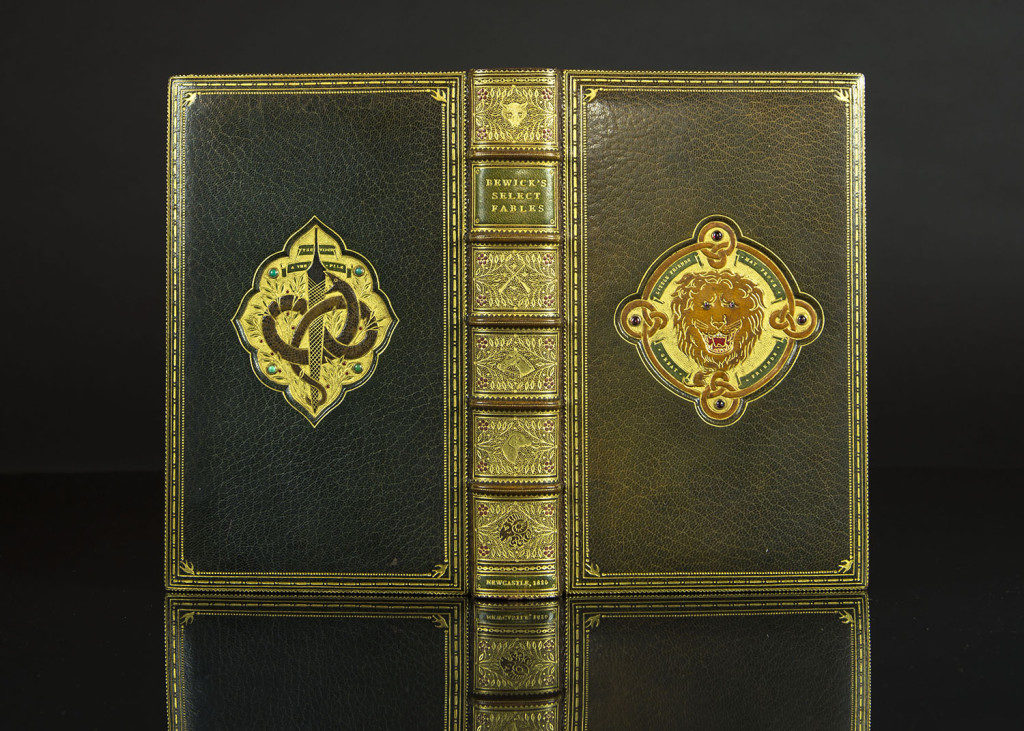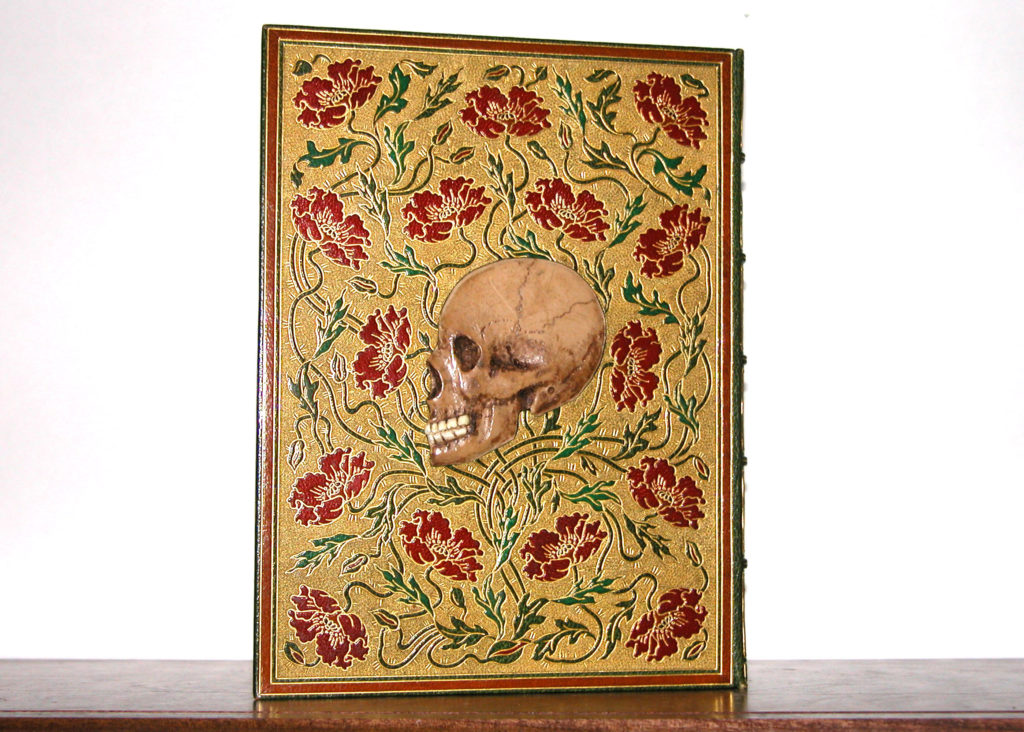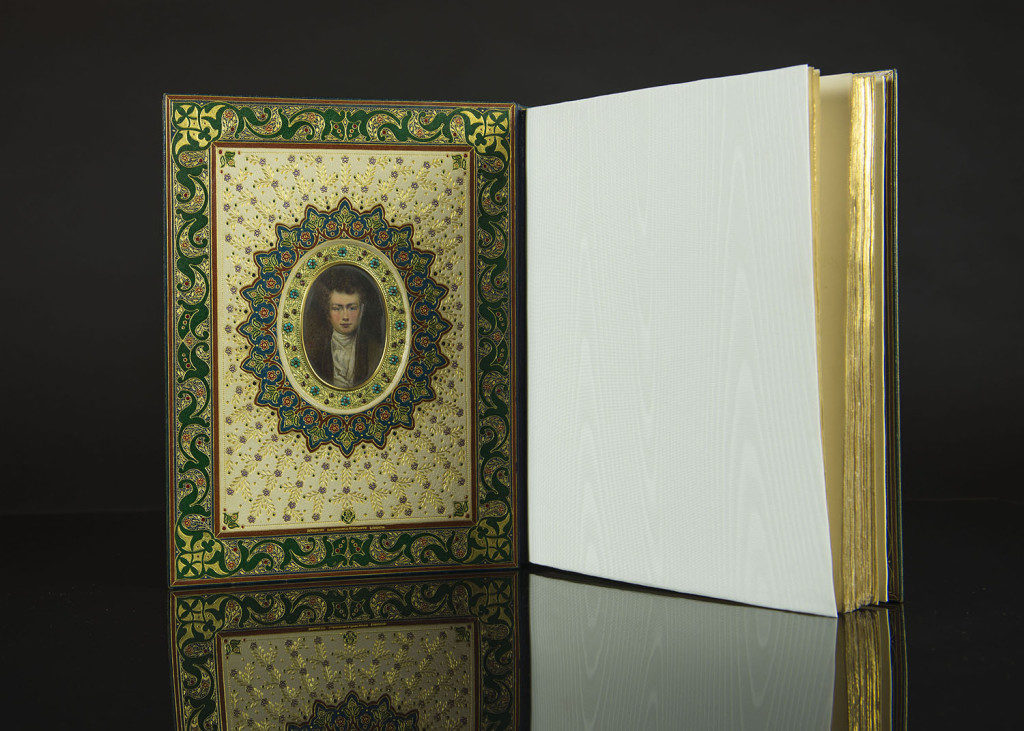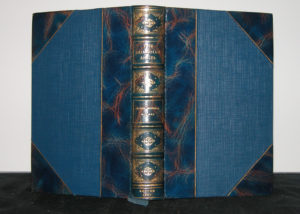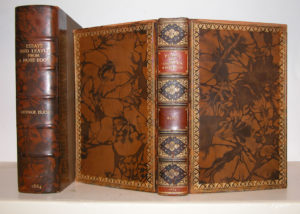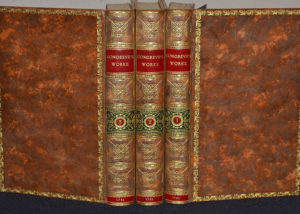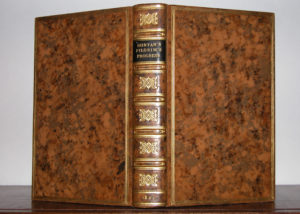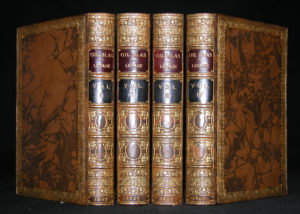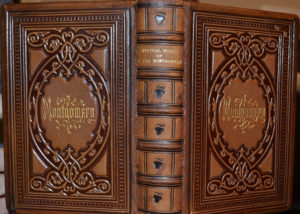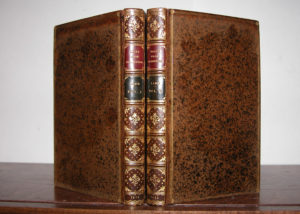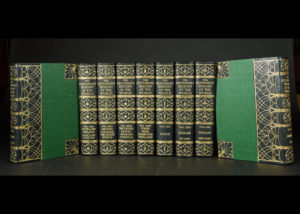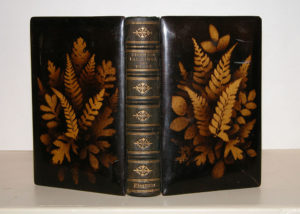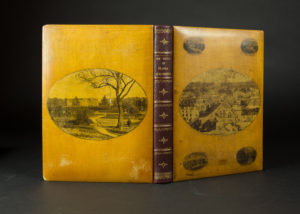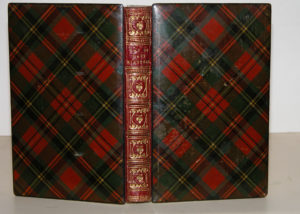
amorial binding
A binding adorned with the coat of arms, usually in gilt, of a previous owner (either the original or a subsequent owner). The term also includes bookplates incorporating the owner’s arms. It also describes armorial decorated books.
american binding
A binding adorned with the coat of arms, usually in gilt, of a previous owner (either the original or a subsequent owner). The term also includes bookplates incorporating the owner’s arms. It also describes armorial decorated books.
battershell designed binding
This is not about the binding but the historical significance of a letter or document tipped in and bound to a binding. It usually pertains to the author of the book or someone significant that owned it. This is not the same as something that was flat-signed inside of a binding.
cosway binding
Cosway bindings first appeared in the twentieth century. These bindings, usually made of Moroccan leather, were adorned with hand-painted ivory or porcelain miniatures inset on the book boards. The ivory could appear on the inside or outside of the boards and were protected by a sheet of glass covering the ivory. J. H. Stonehouse developed a series of designs and then commissioned the Riviere bindery to produce some fine bindings with these designs. In the early 1900s, C. B. Currie designed miniature paintings resembling the style and use of.
Cosway bindings first appeared in the twentieth century. These bindings, usually made of Moroccan leather, were adorned with hand-painted ivory or porcelain miniatures inset on the book boards. The ivory could appear on the inside or outside of the boards and were protected by a sheet of glass covering the ivory. J. H. Stonehouse developed a series of designs and then commissioned the Riviere bindery to produce some fine bindings with these designs. In the early 1900s, C. B. Currie designed miniature paintings resembling the style and use of.
embroidered binding
Bindings covered with velvet, silk, or canvas that have designs which were done in gold or silver thread and colored silks. Sometimes they even had pearls or sequins. The earliest known English embroidered cover is from the thirteenth cen-tury. In the sixteenth and seventeenth centuries, embroidered bindings became popular in England, especially bindings under the Tudors and Stuarts. They were also known as needlework bindings or textile bindings.
embossed binding
Covers of leather which before being attached to the book had a design impressed on the sides and the spine — a process called bas-relief. It was done with a heated dye and a counter dye. Many European publishers of Bibles and prayer books began using these bindings. Embossed bindings in Morocco became very popular.
etruscan binding
These were decorated with pat-terns of Etruscan vases and other classical ornaments, usually from calf skin. Panels on each cover are encased by borders of various classical designs. This was perfect-ed by William Edwards of Halifax in the 1700s. The method was to brush acid on the calf skin, thus burning the design into the leather.
fore edge painting
The fore edge is the edge of the book, opposite the spine. A fore edge binding has a hand-painted painting or design drawn on this edge. They are extremely popular and quite expensive. These books have become very rare since there were not very many of them made. Original examples are hard to find, and there are thousands of reproductions that have flooded the market. Most of these fore edge reproductions are being produced on old books. Even these fore edge books have value. However, the older fore edge books are worth between $400 and $10,000 each. Under the book term section, please look at two definitions entitled “Edwards of Halifax” and “Fore Edge Paintings” for more information on fore edge books.
gilt to death binding
hand painted pages
high relief binding
high relief embossed
highly gilt binding
highly gilt embossed
incunabula – before 1500
inlay and onlay binding
inlayed binding
inlayed dentelles
ivory binding
inserted map
ivory inset with jewels
ivory, brass, bronze binding
kelliegram binding
leather doublure
malachite style binding
moroccan binding
jeweled bindings
Examples of these bindings by Sangorski & Sutcliffe or Riviere are rare and command large prices. Some took an artist as long as 13 months to make and generally are “one of a kind.” They are original, as usually just one was commissioned or produced. Bindings sometimes were of gold, silver, or silver gilt that were encrusted with semi-precious stones, many times surrounded by an ivory plaque. They date back as far as the seventh century. These bindings became more available in the twentieth century. Binders such as Sangorski and Sutcliffe made jewel bindings where the jewels were set in metal cups with small base plates. The plates were pasted to the mill board, the bases being hidden by the leather of the cover which was cut so that only the jewel and the rim of its cup could be seen. Several examples of these twentieth century bindings are available online with www.abebooks.com, and are listed between $10,000 to 575,000.
mother of pearl tooled-in
mother of pearl bindings
mother of pearl & abalone
custom made bindings
onlay bindings
onlay miniature binding
padded binding
paneled binding
pictorially stamped binding
papier mache bindings
A grayish substance made from paper pulp. When hardened it could be used in forming boards for bookbinding. Even though it is a French sounding name, papier mache was not made in France until the mid seventeenth century. Papier mache actually originates from China. They used it to make helmets, which they toughened by many layers of lacquer. Papier mache is French for “chewed paper.” Famous English bookmaker John Baskerville, well known for his fine quality books, began to copy the lacquered pieces from Japan in 1740. His assistant, Henry Clay, invented a way to produce papier mache so strong that it was equally as durable as wood and began using it for bookbinding.
mottled “tiger paw” calf
mottled bindings
multi colored panels
porcelain hand painted & velvet
porcelain inset and jeweled
purple moroccan binding
prize bindings
publishers calf
relievo bindings
reticulated brass binding
riviere morocco onlay
signed binding
silk doublures
silk embroidered binding
silver and velvet binding
silver cornered binding
silver repousse
spattered tree calf
mixed snakeskin binding
python snakeskin binding
rattlesnake skin binding
speckled binding
spider web gilt design
steel engraving
style of thomas paine
suede binding
signed letter tipped in
fern sycamore wood
sycamore wood binding
sycamore hand painted
tartan binding
tear drop binding
terracotta medallions
tree calf bindings
A calf binding that has the boards stained by mixing copperas and pearl ash to a design of a tree or tree trunk. Used in books printed in the late 1700s, to resemble veneer of furniture or roots. Popular from 1840 to 1925.
vellum bindings
edwards of halifax vellum
vellum hand colored
tortoiseshell binding
velvet binding
wood binding







